Animation
On the animation side of things, Houdini viewport now supports
onion skinning with the option to set a number of before and after
frames.
There are also improvements in the Dope Sheet, with the
addition of a ripple tool and the ability to box select keyframes. In
the curve editor you can set automatic slope and also cycle animations
beyond the keyframe range.
But the bigger additions are on the character animation side
of things. There are two new simple rigs that have been added, one for
male and one for female. Both rigs have onion skinning and render as
subdivision controls. They also have squash and stretch controls.
Dual quaternion skinning has been added for better skinning
and deformation of characters.
There is also a new character picker pane and a pose library
pane. All the simple rigs have built-in poses and can be displayed in
the character picker pane. The Pose library pane is fairly simple to
use and also allows the user to save and load custom poses.
Dynamics
Viscous fluids
In Houdini 15, there are new shelf tools for setting up
Viscous fluids which allow the user to generate Lava and also Melt
objects. Even though this could be done before, the shelf tools make it
a lot easier to setup.
This is done using the new Gas Temperature
Update node, which allows the user to set a cooling rate for the liquid
which solidifies the liquid over time. Also using the shelf tools for
heat and cool object the user can transfer temperature from an object
to the liquid. This allows the user to melt something when it touches
another object, like a hot knife going through butter.
To support this there is also a new Lava shader which helps
make the rendering process simpler. The Lava shader uses the new
Principled Shader which I will talk about in the rendering section.
Flip Fluid enhancements
In order to facilitate very large scale fluid simulations,
Houdini 15 has added a new Fluid Compress node which allows the user to
radically reduce the number of particles and voxels that are stored to
the disc without losing any details of the simulation. This helps in
saving disc space and overall memory consumption.
This has been coupled with a brand new Particle Surface node
which can use the compressed fluid data to build the fluid surface. It
also has a bunch of previewing options for faster playback in the
viewport which include culling the particle data using a bounding box
or the camera frustum.
The surfacing of fluids has also been improved
by allowing the user to generate masks for the fluid smoothing
operations so that you can maintain a higher density mesh where there
is a lot of movement in the fluid but drastically reduce the mesh where
the fluid is calm.
The white-water system has also been improved. It allows the
user to reseed the compressed fluid data to generate underwater bubbles
and stuff and it also allows for distribution of the white-water
simulation on multiple machines based on the camera frustum.
Distributed Sims have also been improved. Flip Solver now has
a global pressure option so that there are no artifacts at the seams in
distributed sims. Side Effects says that the Fluid System is now
capable of simulating over two billion particles. Of course, I haven’t
really tested this since I don’t have a super computer at
home.
But the point being that everything has been improved to make
it as memory efficient as possible to facilitate very large simulation,
in case you ever want to make 2012 Part II.
Crowds
The biggest addition to the Crowds system is Ragdoll dynamics
which uses the Bullet Solver. The new Collision Layer and Collision
Joints tools help the user setup the collision joints and rotation
limits for the ragdoll. These are fully capable of interacting with
fire, smoke and sand simulations.
Finite Element Solver
The FEM solver is said to be, in certain scenarios, up to 10x
faster than Houdini 14. Even though on a simple scene created in
Houdini 14 with the pig head as a Solid Object and re-simulated in
Houdini 15, I didn’t really notice a very large speed difference. The
viewport playback speed, however, has been vastly improved from version
14.
The Solid object and the Cloth object now have new controls
for self-collision and the viewport is much faster when displaying
large number of tetrahedrons and polygons. Also Solid Object now uses
separate geometry for simulation and rendering. This is done using the
new Solid Embed geometry node, which is a digital asset that
encapsulates the older Remesh tool. This method is called embedding and
there is an option in both the Solid object and the cloth object to
turn it off and use the actual mesh itself.
However, when using the embedded method there can be a really
good increase in speed since you end up calculating on a much lighter
mesh and then transferring the deformation to your original heavier
mesh.
Other improvements to dynamics
The POP solver now has the option now to put particles into
auto-sleep and can be woken up using the POP awaken node when close-by
particles or objects start moving. This is really helpful when dealing
with very large Grain simulations. This way only the particles closest
to a moving object will get simulated and the others will remain
dormant.


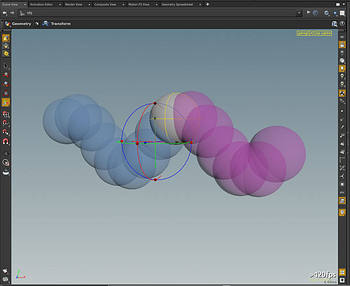
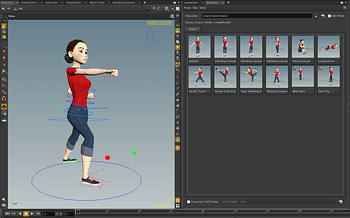
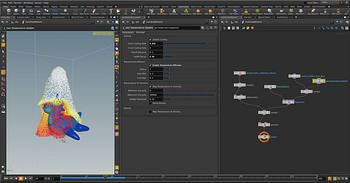
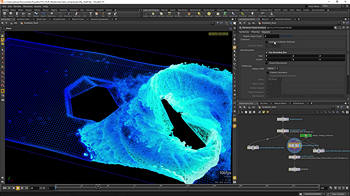

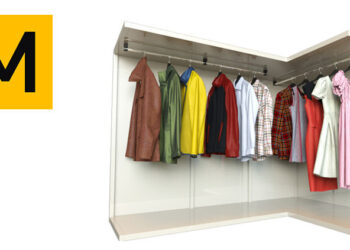

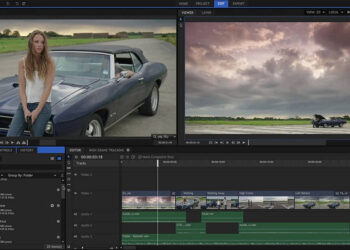




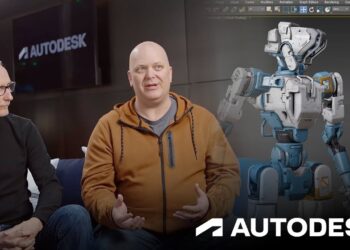

Pretty cool review, I really liked it, plus your tutorials seem pretty cool 🙂
Cheers.
Yeah just wished attributes and looping wasn’t put into Modeling description.
thanks for the review.
Always excited about Houdini.
Thanks for the review.
I would pay for your tutorials on Youtube if you created a subscriber $$ only channel. Thank you!
Hi Rodger,
I don’t have a subscriber channel on YouTube. I’ve never been asked about that so far. I’ll definitely look into it. However , all of my training is available via gumroad and all the content , upon purchase , is downloadable.
Could you kindly tell me why you would prefer YouTube?
Regards
Rohan Dalvi
Not to talk badly about his request, but Youtube streaming doesn’t make sense at all. Gumroad, Cubebrush, even Steam are better options (in my view).
What you could do is a vimeo on demand, that works well. THU has it. You can make it like a rental for a period or just buy and own forever.
Excellent review Rohan. I have been watching your videos on youtube and Vimeo. Interested in trying out Houdini now that it has decent poly modeling tools out of the box ( and the new Houdini Indie price point )
I am eyeing your Gumroad tutorials. Do you plan to do a ” I am new to 3d and houdini” level of tutorial series ( like how 3dbuzz’s jason Buzzbee had done way back ?
@Singhs.apps –
There is a great tutorial like this here:
http://digitaltutors.com/tutorial/2334-Introduction-to-Houdini-15
I can highly recommend it.
(I switched to Houdini after 16 years of 3dsmax, and that tutorial there was very nice to have.).